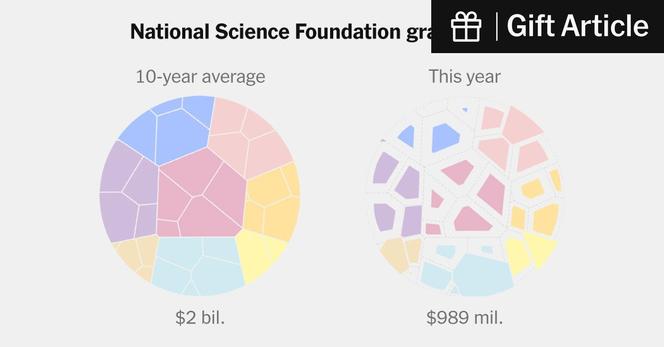#SilentSunday
Bruce Hamilton
- 351 Followers
- 416 Following
- 864 Posts
#SilentSunday
I am under no illusions about the likelihood that any of the recommendations below would be implemented by the current administration, but I still think it is worth reiterating the conclusions of the #PCAST 2023 working group report https://bidenwhitehouse.archives.gov/wp-content/uploads/2023/04/PCAST_Extreme-Weather-Report_April2023.pdf on Extreme Weather, which I was proud to be a member of. An abridged version of the main recommendations is listed below.
1.1. U.S. climate-modeling centers (supported by NOAA, NSF, DOE, and NASA) should enhance their high-resolution modeling capabilities and state-of-the-art statistical methods to quantify annual extreme weather risks.
1.2. The White House should designate a lead agency to maintain an extreme weather data portal where observations and modeling products are regularly updated and widely accessible.
2.1. Designate an interagency group to inventory and release federal data that are useful to develop and test weather-hazard models and hazard-loss models.
2.2 NOAA, FEMA, and other agencies as the President deems necessary, should develop guidelines for measuring the accuracy of weather-hazard and hazard-loss models and promote the use of skill-scoring hazards.
2.3 Fund research on risk-assessment modeling systems that use extreme weather probabilities, weather-hazard models, and hazard-loss models to quantify the likelihood and economic costs of extreme weather events.
3.1 The White House should develop and publish a National Adaptation Plan to prepare for and mitigate increased risks from extreme weather.
3.2 Fund research on the adaptation of households, real-estate and insurance
markets, and local governments to changing climate and extreme weather risk.
#Drosophila #Genetics
New preprint from the labs of Richard Bayliss and Eileen Kennedy (+ me). Defining a novel mechanism of protein-protein interaction that is phospho-dependent & using structure to design cell penetrating disruptors of the mechanism.
Great work from first author Vanda Gunning and colleagues.
Mechanistic Design of Cell-Penetrating Disruptors for a Phospho-Dependent Interaction
The complex formed by transforming acidic coiled coil 3 (TACC3) and clathrin heavy chain (CHC) enhances mitotic spindle stability and strength by cross-linking microtubules. The interaction is dependent on phosphorylation of TACC3 at S558 by Aurora-A. Previously, we elucidated the structural basi...
Lab preprint now in PubMed:
Nonequivalence of Zfp423 premature termination codons in mice.
In which two overlapping indel variants that predict the same frameshift, stop codon, and potential reinitiation codon have very different outcomes.
https://doi.org/10.1101/2025.05.30.656936
The #NSF has reduced spending on the basic sciences by 50% or more in 2025, with similar cuts proposed for next year as well. For instance, through to May 21 of this year, the funding awarded to the mathematical sciences is currently $32 million, compared to the 10-year average of $113 million. These are of course large numbers for an individual person; but with the US population of 340 million, this amounts to spending less than 22 cents per American per year on basic #mathematics research, compared to the 10-year average of 80 cents per American per year. https://www.nytimes.com/interactive/2025/05/22/upshot/nsf-grants-trump-cuts.html
I myself have been fortunate to be supported by a small fraction of this 80 cents for almost the entirety of my professional career, allowing me to conduct research in the summer, invite speakers to my department, and to support graduate students. For now, I can continue these activities at a minimal level using by existing (and relatively modest) NSF grant https://www.nsf.gov/awardsearch/showAward?AWD_ID=2347850 , but already I do not have the resources to put into any future long-term projects. For instance, my experiments with using new technologies for mathematical workflows are currently being conducted purely by myself together with contributions from unpaid online volunteers; I am applying for funding from several sources to scale these projects up beyond a proof-of-concept level, but I am expecting the process to be extremely competitive. (1/3)
New public server
arXiv
bioRxiv
leoXIV
Tulp3 quantitative alleles titrate requirements for viability, brain development, and kidney homeostasis but do not suppress Zfp423 mutations in mice.
Tubby-like protein 3 (TULP3) regulates receptor trafficking in primary cilia and antagonizes SHH signaling. Tulp3 knockout mice are embryonic lethal with developmental abnormalities in multiple organs, while tissue-specific knockouts and viable missense alleles cause polycystic kidney disease. Human patients with TULP3 mutations present with variable, but often multi-organ fibrotic disease. We previously showed that mouse and human Tulp3 expression is negatively regulated by ZNF423, which is required for SHH sensitivity in some progenitor cell models. The level of TULP3 function required to prevent mutant phenotypes has not been known. Here we report a Tulp3 quantitative allelic series, designed by targeting the polypyrimidine tract 5-prime to the splice acceptor of a critical exon, that shows distinct dose-response effects on viability, brain overgrowth, weight gain, and cystic kidney disease. We find limited evidence for genetic interaction with Zfp423 null or hypomorphic mutations. Together, these results establish an approach to developing quantitative allelic series by exon exclusion, rank-order dose-sensitivity of Tulp3 phenotypes, and model thresholds for TULP3 function to prevent severe outcomes. ### Competing Interest Statement The authors have declared no competing interest. National Institute of Neurological Disorders and Stroke, , R01 NS097534 National Cancer Institute, , T32 CA067754, P30 CA023100 National Institute of General Medical Sciences, , R25 GM083275 National Institute of Diabetes and Digestive and Kidney Diseases, , P30 DK063491

